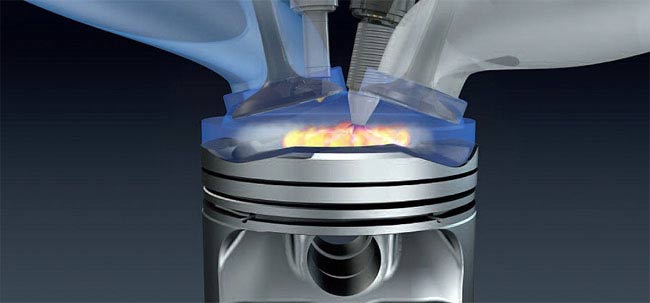Automotive Engine Downsizing with Finite Element Analysis
Posted by Bhaumik Dave on December 15th, 2014
Modern automobile engines are required to face numerous challenges apart from its ability to churn out maximum power through efficient fuel burning. As global market and government regulations are increasingly getting stringent, the engines are to be designed to give out more with fewer amounts of resources.Factors such as weight, emission characteristics and performance remain vital for engine designers, requiring to adopt modern computer aided simulation techniques and identify ways to trim down the engine size as much as possible while also ensuring that the engine develops the same or even more power output.
Designing lightweight engines brings along a lot of advantages such as improved power to weight ratio, reduced exhaust emissions, increased cost savings in terms of material required and finally an overall reduction in weight of the vehicle to obtain better efficiency.

Downsizing engine and its components is usually performed by opting light weight materials or optimizing the design by removing excess material from the component. The utilization of finite element analysis for such applications is highly advantageous. The process of analyzing any engine component for the amount of loads and stresses it undergoes and then optimizing the design is often a process that engineers adopt using finite element analysis. In order to realize the potential of FEA in downsizing engine components, few applications are mentioned here, which can be further extended for every piece of metal that goes in building the engine.
Piston:
Piston being heart of the IC engine is exposed to high temperatures due to combustion process. Additionally, the pressure exerted on the piston accounts for the structural loads that the piston must withstand. Determining the engine combustion chamber temperature and pressure loads, the FEA solver can provide insights on the amount of stress and deformation that can be expected for a particular design. Using the results, optimization process can be incorporated to identify regions that can be trimmed without raising the deformation values. Once a design is finalized, it is possible to go for physical tests and confirm the validity of the simulation results.
Connecting Rods:
The force from the piston is transmitted to the connecting rod, which itself undergoes structural stress due to reciprocating motion. From the design perspective, it has to withstand the forces from piston and transmit to the crankshaft without getting deformed. A similar model can be developed using FEA by providing loading conditions that replicate actual conditions and a structural analysis can be performed to visualize stress concentrating regions. Once identified, it is possible to identify alternative design that uses less material while perform its job of transmitting motion without deformation.
Crankshaft:
A similar procedure can be adopted for crankshaft as well; the deformation due to structural load from the connecting rod and the inertial load due to rotation can be identified and can be used as an input for finite element analysis. The results can provide insights on stress concentration that can lead to the identification of possible design alternatives in terms of different material or reduction in weight.
Valves:
Although exhaust valves are small and contribute least in the overall engine weight; the significance of identifying alternative valve design with reduced weight can prove extremely beneficial when seen from mass production perspective. FEA can help analyze exhaust valves exposed to high engine temperature and its structural strength to withstand stress and subsequent deformation using thermo-mechanical analysis. Design alternatives can then be employed which may include removing the material from the stem portion or choosing an altogether different material with light weight characteristics.
(Image Source: www.iav.com)


